Materials & Supplies
Building Materials in Kenya
A list of common construction materials and how they work.
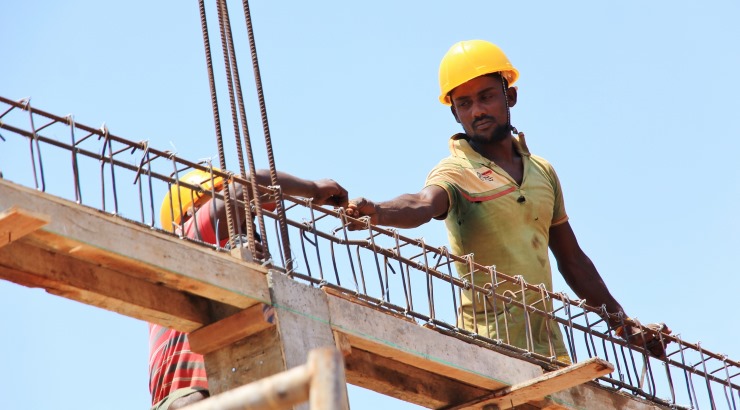
Building materials are substances, whether natural or man-made, which are used for construction purposes to create structures and buildings.
Unlike building products, which are manufactured items, construction materials are the raw elements used in building projects.
For illustration purposes, metal is a material, whereas a metal beam is a product.
Here are the common types of building materials in Kenya.
1. Stone
Manually-cut stones and machine-cut stones are the two types of building stones in Kenya. The former are mostly used for foundations and load-bearing walls due to their strength.
On the other hand, machine-cut stones, which are well shaped with an even surface, are ideal for those seeking to save on the time and labour costs that go into dressing.
These stones also save on mortar during building and plastering since there are no uneven gaps to be filled.
2. Sand
Sand, which is basically loose particles made from broken rocks, is one of the most popular construction materials in Kenya.
It is used with cement and sometimes lime to make mortar for masonry work and plaster. The material is also used as a part of the concrete mix.
Sand is also used in the production of glass and sandpaper.
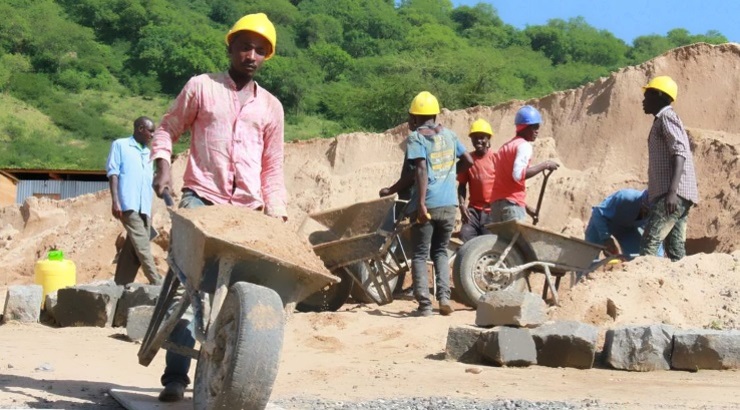
The rising global demand for sand is quickly becoming an environmental disaster as rogue harvesters are stripping beaches and riverbeds in search of the grains.
RELATED: Global Sand Shortage Begets New Breed of Mining ‘Mafia’
3. Fired bricks
Fired bricks are made using clay, which is compressed to form blocks that are then air-dried. After drying, the bricks are fired in a kiln to permanently harden them.
Bricks can have hollow cavities to lighten them, hasten the drying process, and make them lighter and easier to transport for construction.
They are popular due to their fire-resistance abilities and are commonly used for the construction of walls and arches as a substitute for stone.
Individual bricks are placed on top of each other and glued together with mortar.
4. Metal
Metal is commonly used as a structural framework for large-scale constructions such as skyscrapers and mega infrastructure facilities.
There are many types of metals used for construction, including steel, copper, chrome, gold, silver, and titanium. However, steel, which is an alloy of iron combined with a small percentage of carbon, tops the metal category of the most popular construction materials.
Steel is strong, flexible, and long-lasting, making it the most preferred metal for structural buildings. It is commonly used to make reinforced concrete used as support for structures in buildings, dams, and bridges.
RELATED: Why Builders Use Steel in Construction
Besides steel, metals such as aluminum and copper have continued to gain popularity as a result of their rust and corrosion resistance. Copper is commonly used for electric wires, indoor design elements, and piping for water supply.
Aluminum is used for gutters, roofing sheets, and roofing nails, while other metals such as gold, silver, and chrome are used for decorations due to their high cost and lack of tensile strength and hardness.
5. Cement and concrete
Cement and concrete are important building materials, offering a strong and durable foundation for various projects.
Cement, a key ingredient in concrete, is easily the most essential building material, with about 6 billion tonnes being manufactured every year.
It acts as an adhesive that holds stones, bricks, and blocks together.
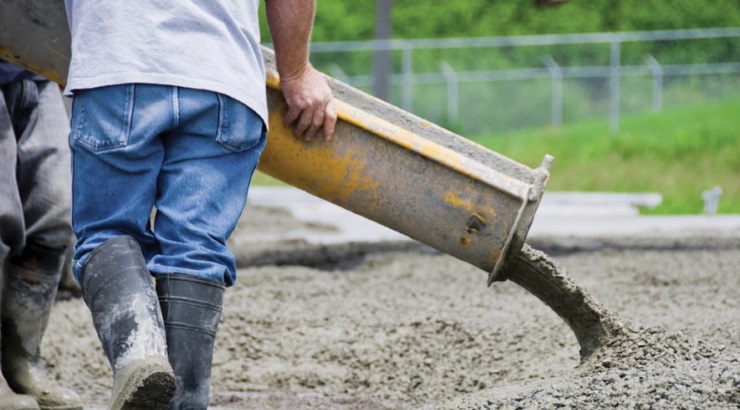
On the other hand, concrete is a composite building substance made by combining cement, gravel, sand, and water in recommended proportions.
This mixture reacts with water through a process known as hydration, binding the other components into a stone-like substance with high compressive strength.
Although concrete’s low tensile strength requires reinforcement with steel bars or rods, it remains the most widely used building material worldwide.
Its versatility and cost-effectiveness make it an ideal choice for floors, bridges, dams, and roads, shaping modern infrastructure and construction projects.
6. Wood
This is one of the oldest building materials in Kenya and around the world, mainly used in panelling, flooring, and general finishing. It is also used in the construction of roofs, ceiling, doors, and window frames, and exterior cladding.
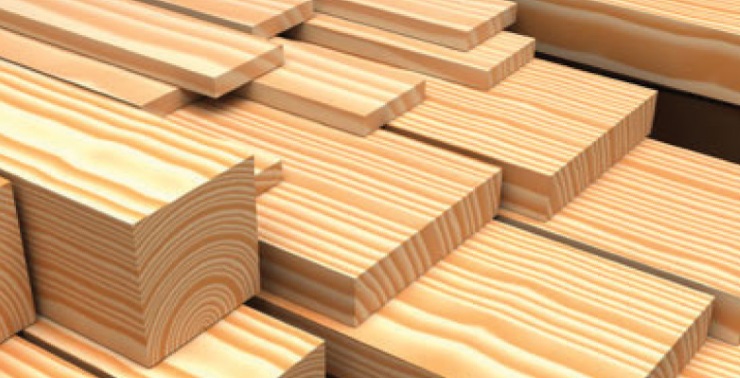
Wood is usually processed into timber for use in timber frame construction and light-frame construction. Softwood is mainly used as a lower-value bulk material, while hardwood is generally used for furnishings.
In recent years, the use of wood as a building material has decreased with many people opting for its alternatives. This is mainly due to the rising cost of the material amid growing threat of deforestation.
7. Bamboo
Bamboo is among the world’s fastest-growing plants. Its high strength-to-weight ratio makes it ideal for structures such as houses, bridges, and scaffolding.
As a construction material, bamboo also beats concrete, brick, and wood in terms of compressive strength and rivals steel in tensile strength.
The material can also be cut and laminated to produce sheets and planks commonly used in flooring, furniture, and cabinetry.
RELATED: How to Build With Bamboo
8. Mud and Clay
These are the common types of construction materials for walls among the world’s poorest communities.
Clay-based houses are usually classified into two categories: those whose walls are made directly with the mud mixture and those made by stacking air-dried building blocks known as “mud bricks.”
Houses built with mud tend to be cool in summer and warm in winter, thanks to the earthen wall’s ability to change temperatures slowly, artificially raising or lowering the temperature depending on the weather.
9. Thatch
Thatch, another term for grass, has been in use for centuries as a key roofing material for residential houses.
It was once a common building material in Europe until it fell out of favour with the advent of industrialisation and the availability of other materials.
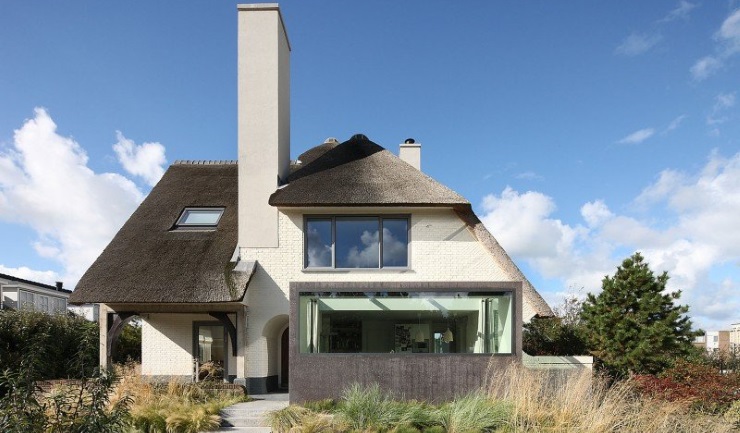
Thatch is still common on the rooftops of many rural African homes. It is also a popular choice among some affluent people in the UK, Denmark, Germany, Ireland, Belgium, and parts of France.
When applied by a skilled thatcher, a good-quality straw thatch can last more than 50 years.
10. Clay blocks and bricks
Known as adobe in Spanish, clay bricks are ancient building materials that have been in use for thousands of years.
Thanks to industrialization, mud blocks have been modified into compressed building blocks that can be manufactured offsite and transported to multiple construction sites.
Structural mud bricks are mostly made using clay, often clay soil and a binder, although other ingredients can include sand, concrete, lime, and other binders.














